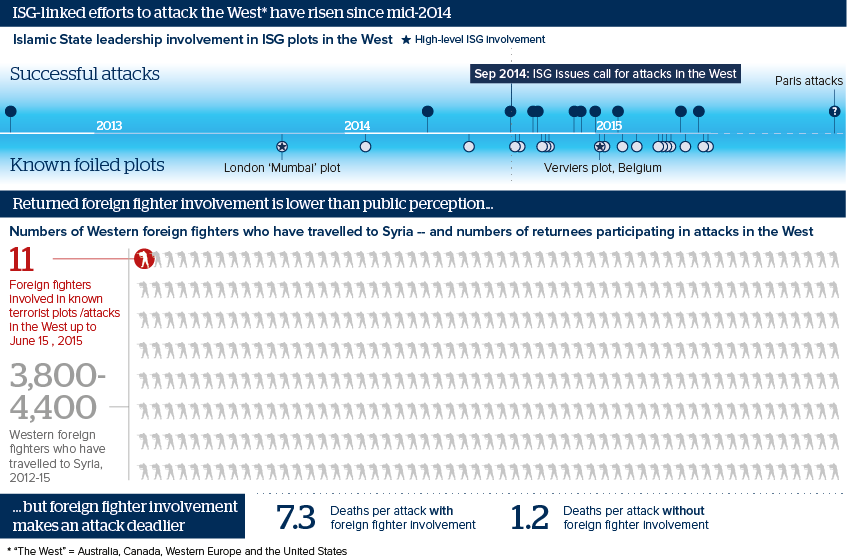Sympathisers feed Islamic State threat to West
The Paris attacks will sharpen focus on the roles of sympathisers and returned foreign fighters in terror attacks
Updated: Jan 17, 2017

Source: ICSR, Perspectives on Terrorism (Hegghammer and Nesser), Oxford Analytica
Outlook
Islamic State group (ISG)'s spokesperson Abu Muhammad al-Adnani called for attacks on the West in September 2014. However, high-level leadership involvement in plots in the West has been low, according to Norwegian researchers Hegghammer and Nesser, who compiled and analysed terrorist plots between January 2011 and June 2015.
ISG has been very successful in inciting 'individual jihad', surpassing al-Qaida. Since mid-2014, ISG has inspired on average two sympathiser attacks per month in the West. They tend to be small-scale, but sympathiser attacks outnumber those with foreign fighter involvement and are more likely to be carried out.
Few foreign fighters have been involved in a plot in the past four years, but attacks they organise tend to be deadlier than sympathiser ones.
Impacts
- Paris could indicate that ISG has shifted to a strategy of coordinating attacks on the West -- though further evidence will be needed.
- High-profile ISG attacks will spur al-Qaida to carry out 'spectaculars' of its own, raising the global risk of terrorism.
- ISG-linked attacks on the West will bolster international support for the Iraqi government and Assad regime.
- The West may home in on deradicalisation, but studies suggest that religious radicalisation does not necessarily precede terrorist acts.
See also
- Foreign fighters could be decades-long global threat - Jan 17, 2017
- Islamic State leader death may prompt global attacks - Aug 31, 2016
- Paris attacks boost Russia's Syria stance - Nov 16, 2015
- More graphic analysis